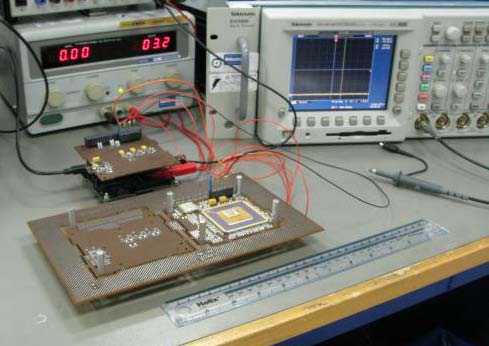UKube-1
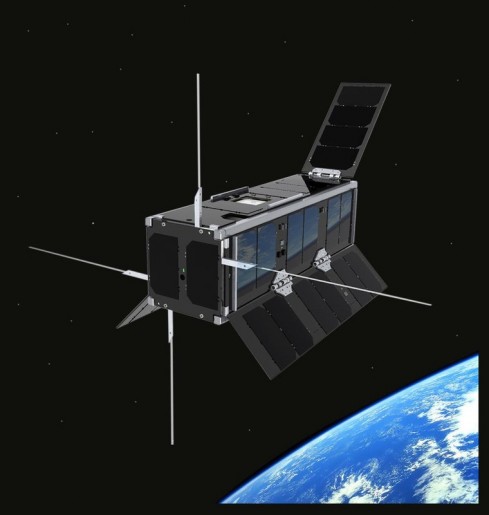
The Ukube-1 spacecraft is a 3U CubeSat built and operated by the United Kingdom Space Agency with Clyde Space Ltd. being the prime contractor. Ukube-1 will demonstrate a 3U satellite bus and a series of five technical demonstrator payloads. The project included the participation of numerous institutions and industry partners that provided components or engineering knowledge. Primary objectives of the mission include the demonstration of space technology from the UK, the feasibility of using a CubeSat payload to gather useful scientific data, to demonstrate university involvement in the operation of a space mission, and to serve as a STEM outreach platform.
Ukube-1 complies with the 3U form factor, being 10 by 10 by 34 centimeters in size with a mass of just under five Kilograms. The primary satellite structure is an off-the-shelf platform built by Pumpkin using aluminum framework and external and internal panels to provide mounting platforms for the various systems. The satellite uses a total of 56 Ultra-Triple Junction Solar Cells that are installed on all satellite panels and three deployable solar panels. The panels are deployed by a spring-loaded system with hot wire cutters that cut the restraints of the panels to allow them to swing open. Two arrays are deployed in a centipede configuration on the longitudinal S/C axis while the third panel deploys as a spoiler. Overall, the solar panels deliver a worst case power supply of 4 Watts.
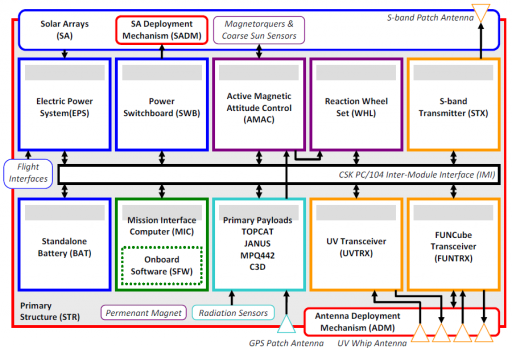
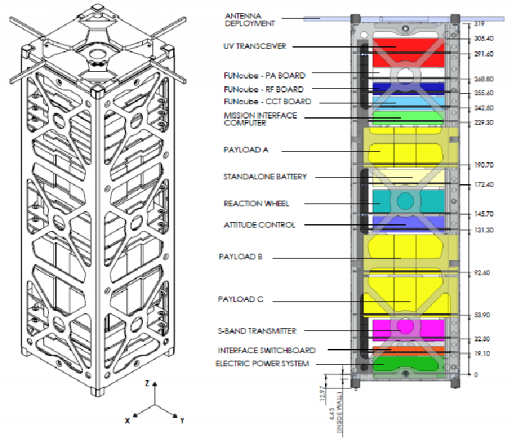
Power is stored in a 30 Watt-hour battery with a nominal voltage of 7.9 Volts. State of charge of the battery is managed by a Battery Charge Regulator that employs Maximum Power Point Tracking to get the maximum available power out of the arrays. The electrical system supplies voltages of 3.3, 4, 5 and 12 volts to the various systems of the satellite via a Power Switchboard with 18 on/off switches that also provide overcurrent protection.
Ukube-1 employs an Active Magnetic Attitude Control System that allows for two-axis pointing with a precision of ten degrees. Attitude actuation is provided by a set of six magnetic torquers that are embedded in the surface mount of the solar arrays. An Inertial and Magnetic Measurement Unit (gyros, accelerometers & magnetometer) and coarse sun sensors installed on the solar panels provide attitude data. Pointing on the XY-plane is ensured by the AMAC while stabilization on the Z-Axis is accomplished using a permanent magnet that aligns the satellite with Earth’s magnetic field. A GPS receiver is used for orbit determination.
Data handling and spacecraft commanding is supported by a Gomspace Nanomind A712D OBC with an ATMEL processor. The Command & Data Handling system uses 2MB of SDRAM, 4MB of Flash memory and a 2GB SD Card for data storage. The flight computer is capable of autonomously managing onboard resources and developing an operations schedule for the satellite in its orbit to maximize the data return.
Command uplink and systems telemetry downlink is done via UHF and VHF frequencies at low data rates of 9,600bit/s. The VHF system can also be used as a Morse code beacon to transmit identification data and basic health parameters. The UHF/VHF system uses two deployable whip antennas. The satellite also hosts a FUNCube Transceiver that can be used for public outreach, operating in the 435MHz UHF and 145MHz VHF bands to downlink data from a Material Science Experiment. Transponder mode for tracking by amateur radio operators is also available, but the system can also be used as a backup communications system. It uses two additional monopole antennas.
For the downlink of payload data, the satellite uses an S-Band transmitter that achieves higher data rates.
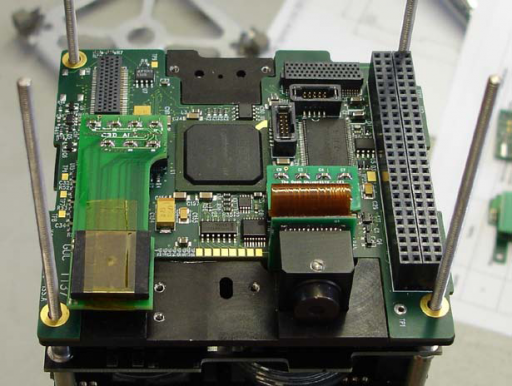
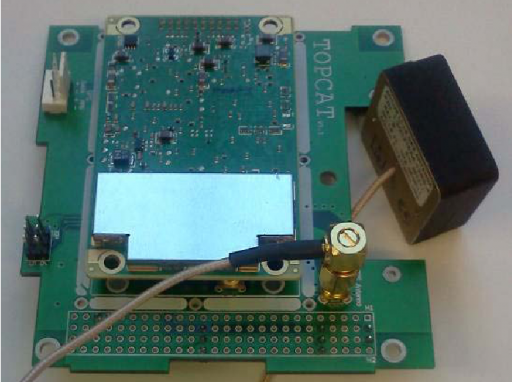
The satellite uses four data buses for communication between the different subsystems, payload and the onboard computer – a 100kbit/s I²C connecting the platform subsystems to the computer and FUNCube, a 100kbit/s I²C payload data bus, a 1Mbit/s SPI bus connecting the payloads to the S-Band system through the OBC that it also connects to the AMAC, and a UART data bus at 9,600bit/s interfacing the computer and the UHF/VHF transceiver.
The Ukube bus can host at least three payloads per mission that can be rapidly integrated via common interfaces to make the platform flexible for hosting a variety of miniaturized satellite payloads for scientific or other purposes. Including the FUNCube Transceiver, this mission carries five payloads – C3D, TOPCAT, MPQ442 and Janus.
C3D is a compact CMOS optical imaging system that demonstrates a new CMOS sensor (Complimentary Metal Oxide Semiconductor) for the acquisition of color images.
Three CMOS detectors are installed in the small payload coupled to a wide field and a narrow field imager. The system includes a Radiation Damage Monitor and a dosimeter payload to be able to track the effects of radiation on the image sensor and correlate the observed degradation with ground testing. Images acquired by the sensors will be processed onboard to monitor radiation-related degradation and record single-event upsets, but the Earth images can also be downlinked for analysis on the ground or outreach activities.
TOPCAT stands for Topside Ionosphere Assisted Tomography and is an instrument that will demonstrate the detection of space weather parameters in the plasmasphere via GPS measurements. Creating a miniature space weather monitor will allow the system to be deployed on many space missions to create a large set of space weather data for responsive observations and forecasting of adverse effects. The dual-frequency GPS receiver will track GPS signals in the plasmasphere to study space weather through tomography.
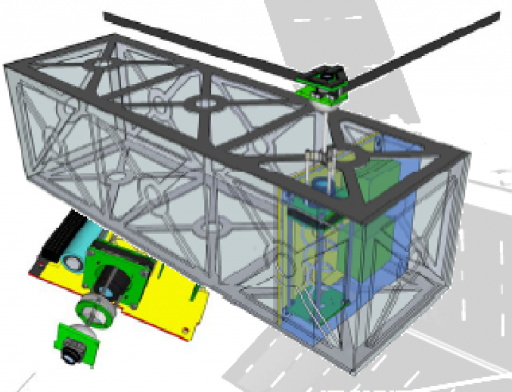
MPQ442 is a payload operated by the UKSEDS (United Kingdom Students for the Exploration and Development of Space) hosting five experiments. The OpenSpace365 is an Arduino processor that will allow the execution of multidisciplinary electronics projects, a total of 365 experiments are planned, each running one day, giving students and hobbyists access to a basic space-based experiment platform.
The OrbitView payload is an optical imager that will collect photos and panoramas from orbit that will be shared with participants in the project. The Super Lab is an experiment that facilitates superconducting materials for testing in space.
SuperSprite is a demonstrator payload for a ChipSat – a satellite on a Chip that contains solar cells, batteries, microcontrollers and a communication system to demonstrate the functionality of a ChipSat for future missions. Finally, the Qubduino experiment includes a series of Field Programmable Gate Arrays with self-repair function for testing in the space environment.
The Janus payload is a Random Number Generator that uses the radiation environment in Low Earth Orbit to generate truly random numbers for high data rate applications. The device also demonstrates the effect of single-event upsets on an FPGA.
